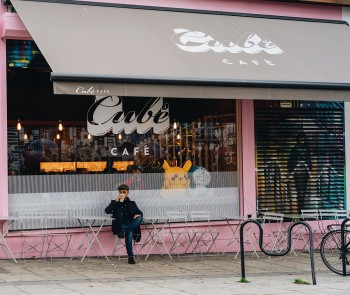City Centre Retail – The Challenge Ahead
— 8 Nov 2019 16:59:07

The past 18 months have seen a number of high profile retail casualties including Toys 'R' Us, House of Fraser, Maplin, Poundworld and Mothercare.
Certain sectors have seen a marked decline in the past decade: banks (12,000 closed branches UK wide), physical entertainment stores, travel agencies and fashion retailers.
A crucial factor is the inexorable rise of online retail. ONS retail statistics show that last Christmas’s retail figures, usually the highest, slumped to their biggest fall for over four years, while online sales rose 21.3%. It is predicted that by 2030, e-commerce will account for around 40% of all UK retail sales.
Retailers are battling a perfect storm of pressures and expect more closures as the year comes to a close. It is evident that society has experienced a massive behavioural shift when it comes to purchasing goods.
In 2019 it has been a case of adapt or die for high street retailers. It is evident that consumers favour the ease and confidence of buying and selling online. Shops on the high street need to adapt if they want to compete with online retailers and therefore survive in today’s digital age.
However, some retailers have moved with the (rapidly changing) times. John Lewis is one company who have a respectable online offering: 25% of its sales are now through the internet; more sales than the Oxford Street flagship. And Tesco’s revenue is £2.9 billion online, second only to Amazon. What this does mean though are less “bricks” and more “clicks”.
Waterstones are a business selling a traditional physical item and despite the Amazon onslaught of e-books have not only survived but thrived. How? By having unshakeable belief in the power of the physical book (the product), closing underperforming stores, allowing managers to largely select their own stock, customising orders, and selecting books to be promoted across all stores.
It is noticeable in Brighton that smaller retail operators are combining a strong online brand and wholesale operations with a limited number of high profile shops in major city centres to promote the brand on the high street.
The future lies in offering what the internet can’t, in providing for the needs of humans as social and embodied beings. As other media has created nostalgic reactions – for vinyl, for film, for manual typewriters, retail experts are now emphasising the importance of “experience”.
The high street may not be dead after all but evolving as it has always done. What is important to recognise is the value and resultant brand awareness of having a physical store presence.
The best performing retailers recognise that online and physical shopping are intrinsically linked, as consumers compare prices and research products or use click and collect services.
So, what can local spaces offer that the internet can’t?
Every town or city has the ability to reinvent itself as something more than where to shop. Retailers spent the whole of the last century cloning every town and it doesn’t work. Instead they should draw on their individual identities, on local produce, heritage, culture, art and crafts, to attract people.
We know there is generally too much retail space and too many retail units. The decline in footfall points towards city centres needing people living and working above ground floor retail. This would create a more enriching way of life and reduce the need for ambitious traffic engineering.
Much of the repurposing of retail space can come from the bottom up, if it is allowed to, with new life occupying redundant space. For example, this could be affordable housing or start-up office space. The high street of the future could have fewer retail outlets and more leisure destinations, more food and drink outlets. Our town and city centres would thrive as social hubs.
Ease of access, appropriate parking, cycling provision and public transport are all fundamental and should be embedded in this ideal city centre. As should planned pop-up events, open markets and exhibitions.
This is our opportunity to revive what is actually good about towns and cities rather than defend something we may not actually miss that much.







